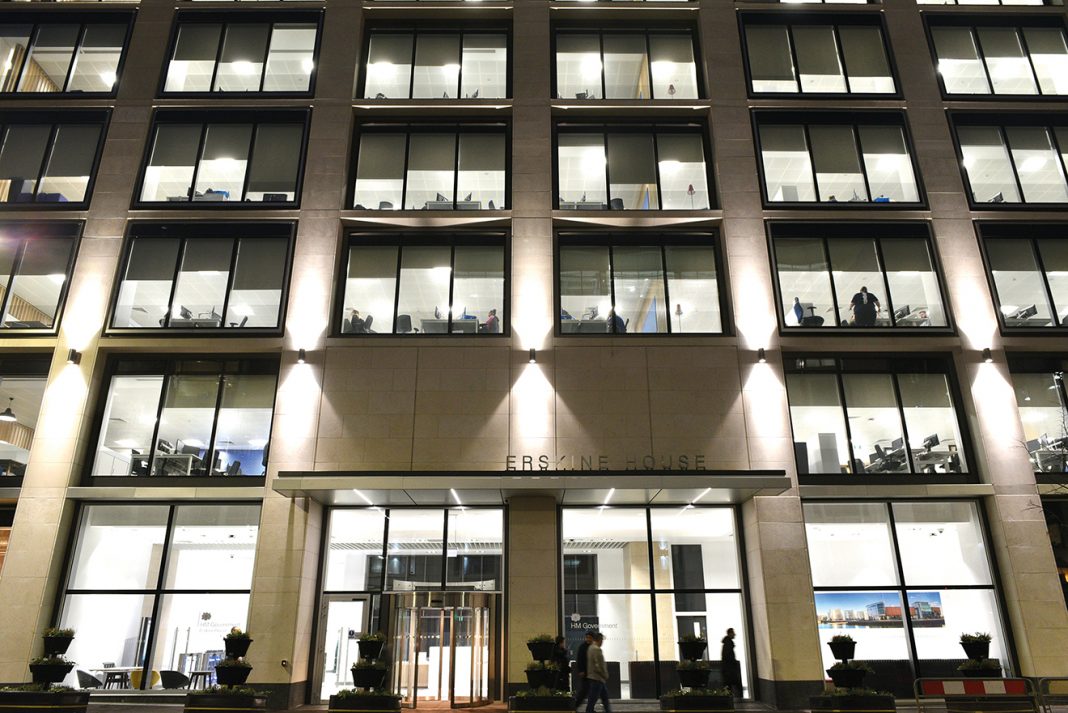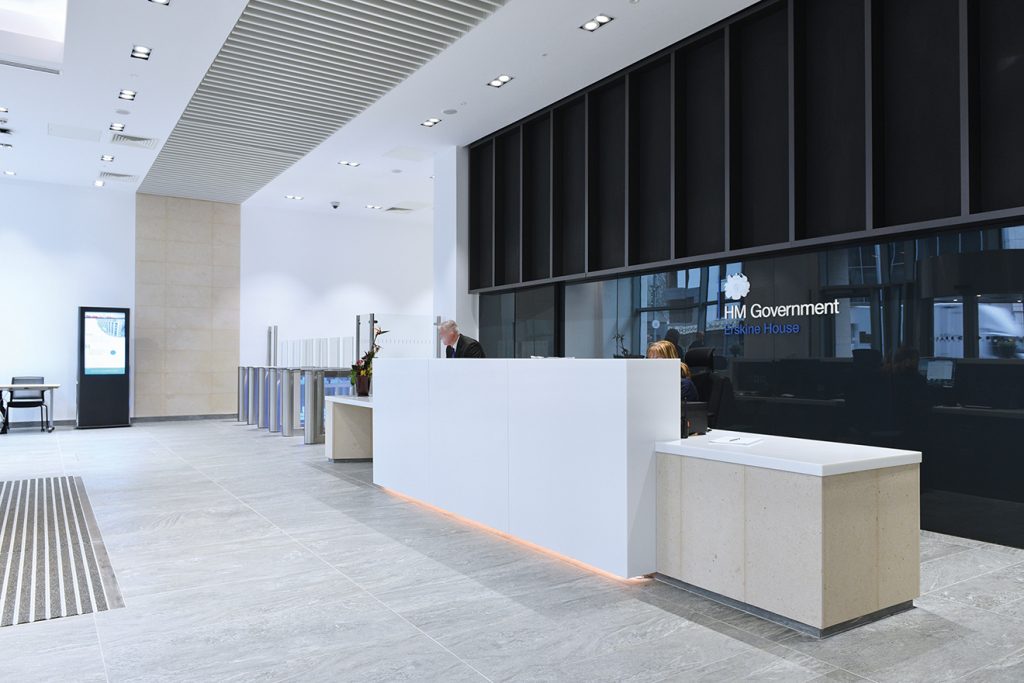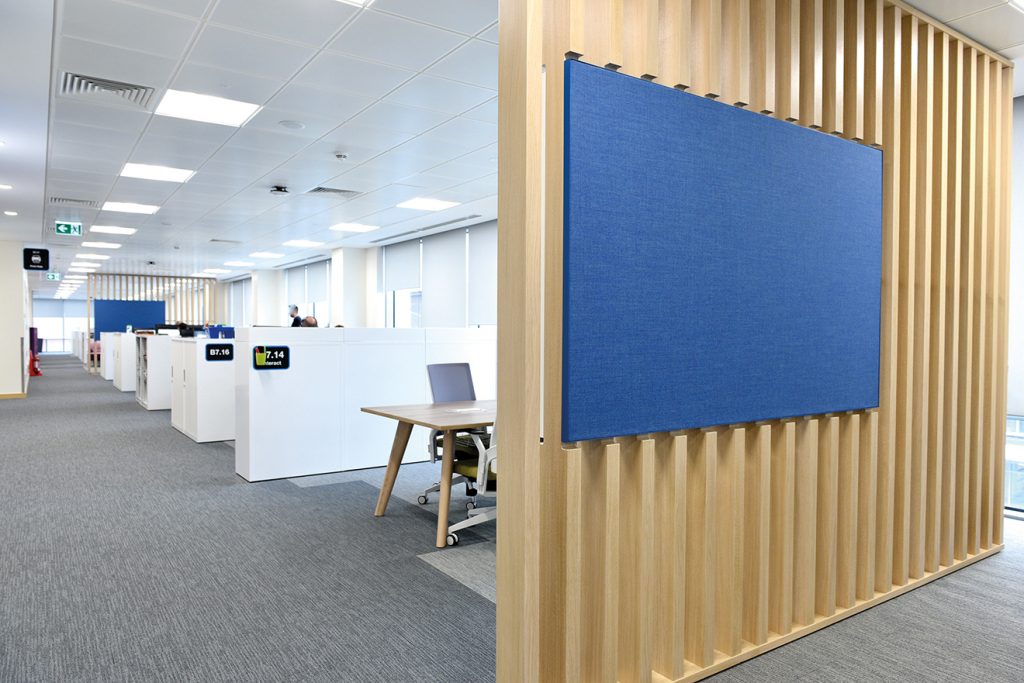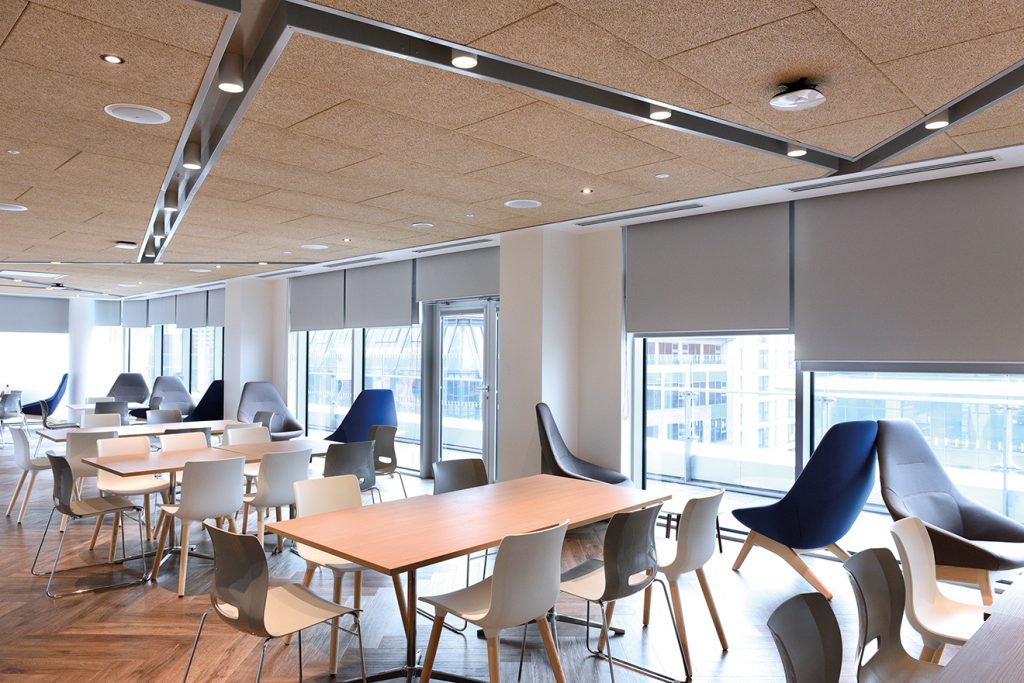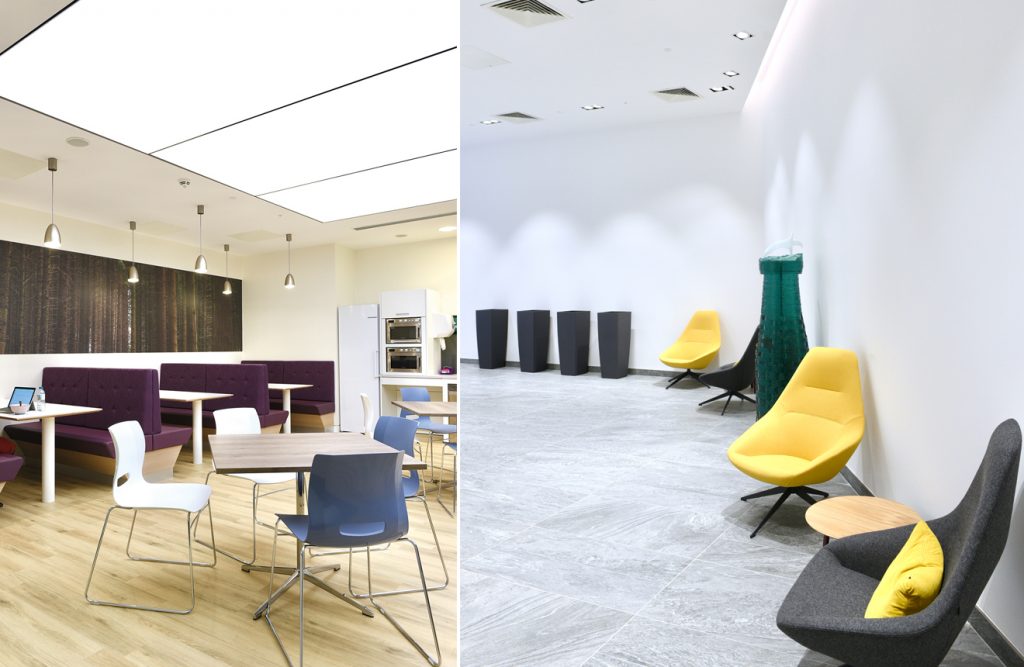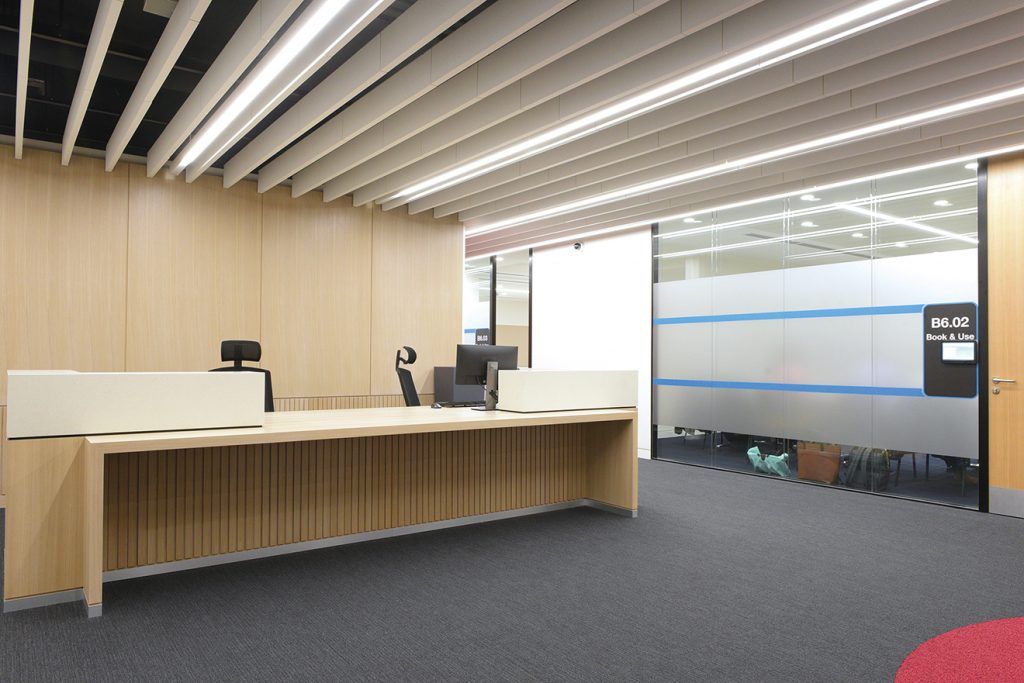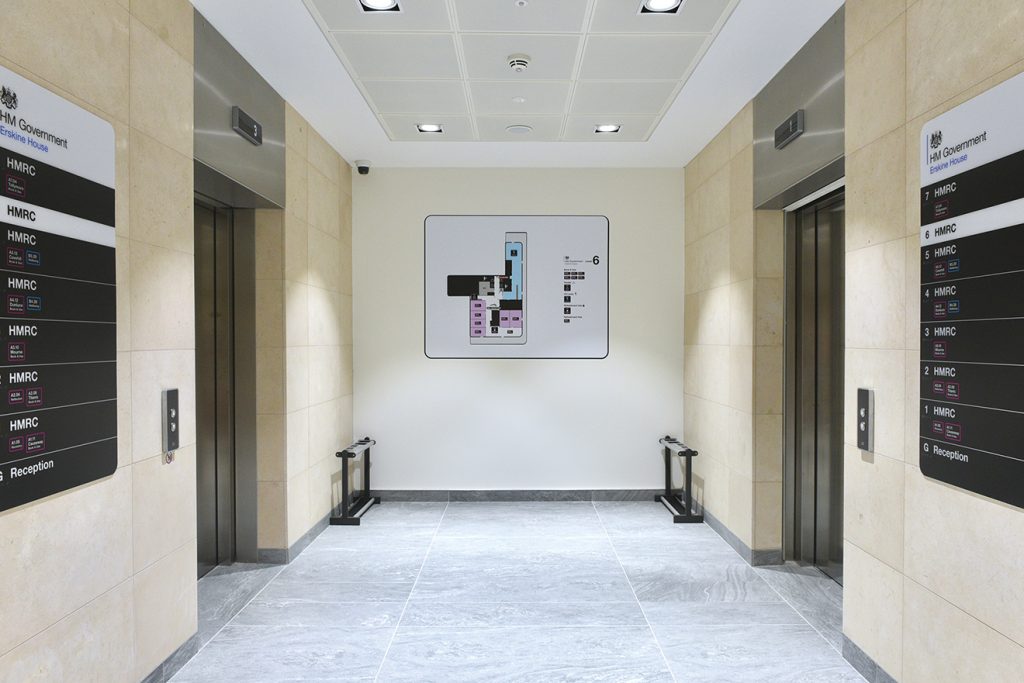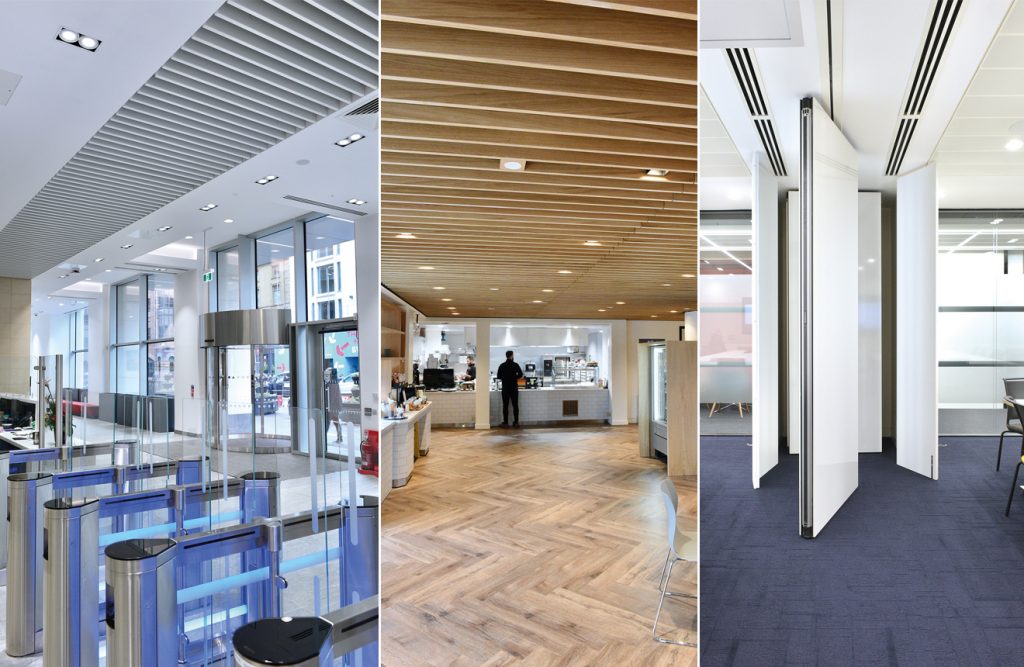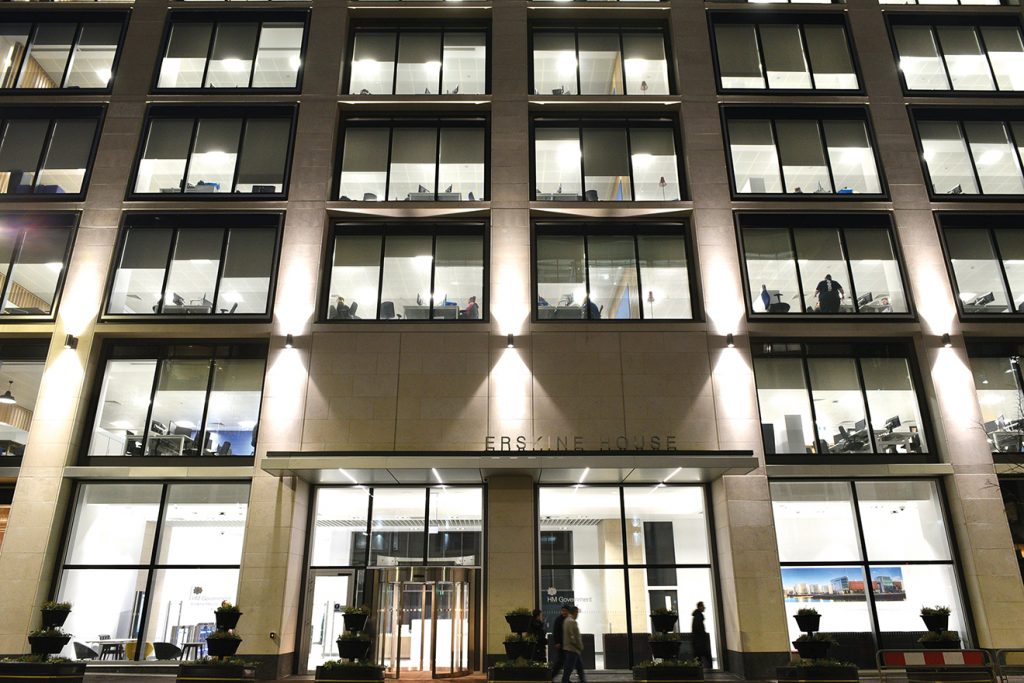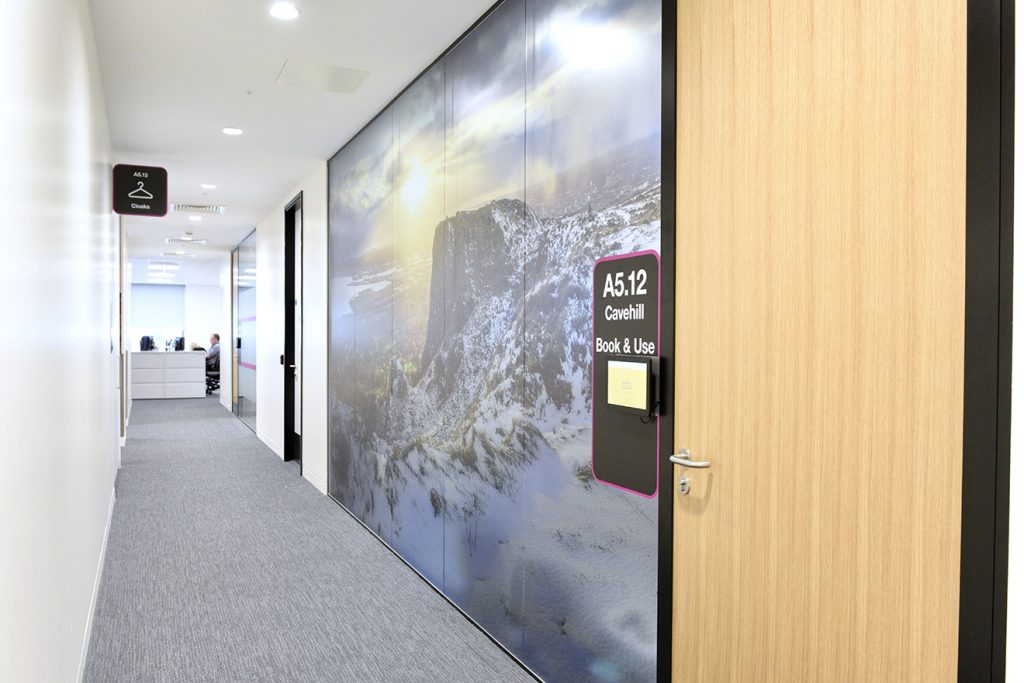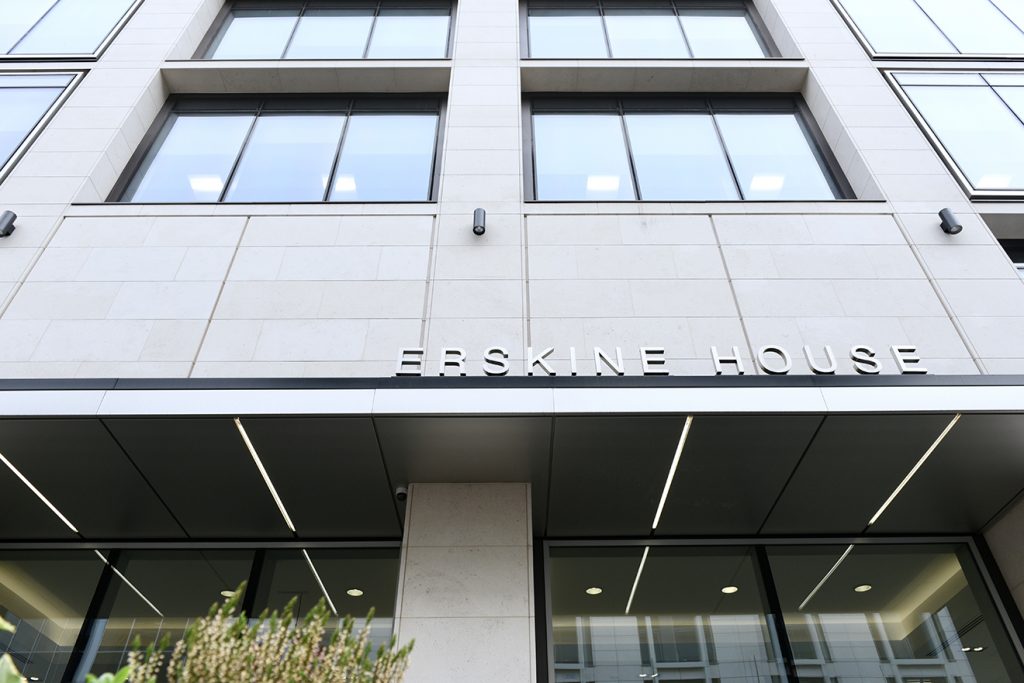If you want evidence of a digital revolution in the construction industry, then look no further than Erskine House.
Part of the UK-wide estates transformation programme by HMRC that will see 170 separate offices consolidated into 13 regional centres, the eight-storey building in the heart of Belfast city centre is a case study in modern methods of construction and the art of collaboration.
Although HMRC’s overarching aspiration is to be the most digitally advanced tax collection authority in the world, this colossal development project is also based on sound economics. With the lease on an ageing property portfolio (much of which was no longer fit for purpose) due to expire next year, this was the optimum time to act.
“Our Locations Programme is the key to HM Revenue & Customs’ wider transformation,” said Colin Casse, Director of the Estates Locations Programme. “By changing people’s working environment with high quality regional centres, HMRC is helping to change how they work. This was a once-in-a-generation opportunity to look at how it operated and ensure HMRC was fit for the future. It also aligns with the wider Government strategy to have hubs in key locations close to public transport connections and local amenities, providing cutting-edge innovative environments to serve all four nations of the UK.
“HMRC is on track to deliver savings of around £300 million up to 2025. It will deliver annual cash savings of £74 million in the tax year 2025 to 2026, rising to around £90 million from 2028.”
Project Team
Client: HMRC
Developer: Orby Investment Ltd
Transformation Partner: Turner & Townsend
Project Manager: Kevin McNaull
Architect: Todd Architects
Building Contractor: Graham Construction
Fit-Out Contractor: Graham Interior Fit-Out
M&E Consultant: Caldwell Consulting
Turner & Townsend
Arthur House, 41, Arthur Street,
Belfast BT1 4GB
T: +44 (0)28 9044 6999
E: Kevin.McNaull@turntown.co.uk
W: www.turnerandtownsend.com

The site at the corner of Arthur Street and Chichester Street, originally home to a four-storey building and more recently a car park, was earmarked for developer Orby Investment Ltd who appointed TODD Architects and their competitively procured contractor, Graham Construction to construct the building. Turner & Townsend, alongside HMRC’s project and implementation team, started engaging with the developer and the construction team in September 2017. “As soon as construction started on the base building, I took on an Assurance Project Manager role for HMRC,” explained Turner & Townsend’s Kevin McNaull. “making sure the developer was implementing the terms of the lease agreement, and ensuring the required standards were upheld by working closely with HMRC’s technical advisor AECOM. Turner & Townsend is a key delivery partner for HMRC’s Estate Transformation, providing programme management, project and cost management, and BIM/Technology advice. It’s actually the first Turner & Townsend real estate commission where every service capability has been applied to one client.”
With the CAT A base building complete, it was the turn of the fit-out contractor to enter the fray. HMRC had developed a UK-wide framework for procuring fit-out, with the aim to drive efficiency and value. However, many of those contractors didn’t have a presence in Northern Ireland, necessitating an alternate tendering process. “We undertook an OJEU compliant procurement to appoint a contractor, a competitive process and fully transparent that resulted in Graham Fit Out being selected.
“Whilst there was a short delay due to issues with provision of permanent power connections, Graham Fit Out took over for CAT B just as Graham Fit Out were completing, leaving a clean break after CAT A completion. We managed to mitigate the effect of some lost time and achieve occupation in December 2019 on schedule,” concluded Kevin.
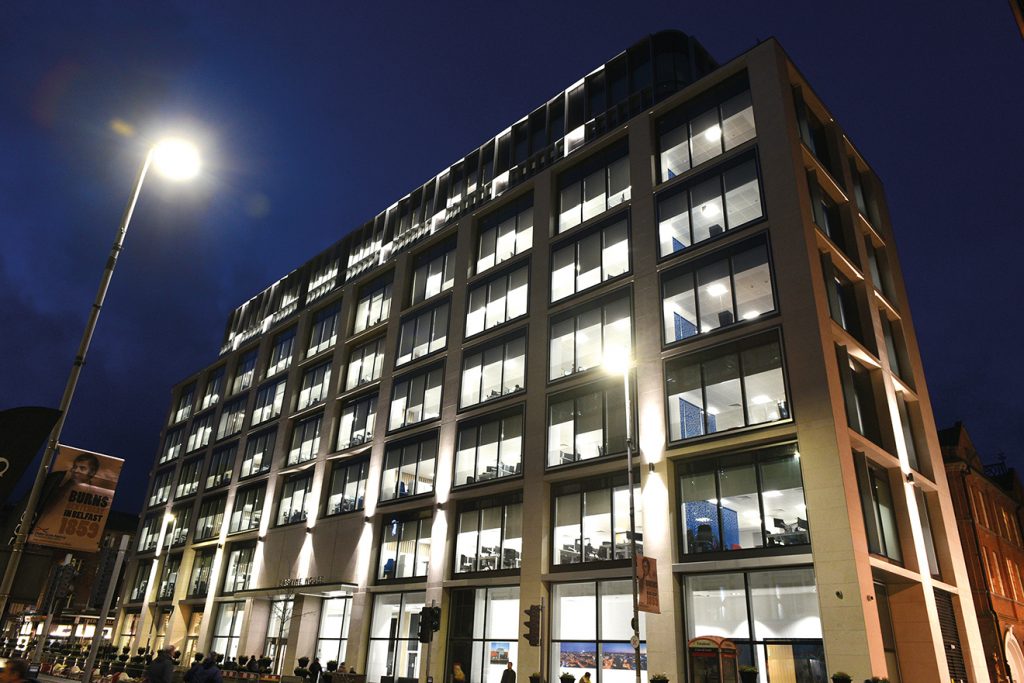
Any large scale construction project requires the communication of often complex information in a way that is both effective and efficient. Get it right and you save time, money, and more than a few sleepless nights. Embracing digital technologies and going with the (data) flow can help to transform builds. Erskine House is a case in point.
“As a business, Turner & Townsend have invested heavily in transforming and digitizing our services,” said Kevin. “This includes collation and interpretation of ‘big data’ which helped us advise HMRC on the cost of delivering a major fit out in Belfast and informed wider programme estimating.”
BIM has also been the digital technology of choice at Graham Fit- Out. Project Manager Gavin Cullen explained: “BIM is something our Construction & Civil division has been using for some time although it was relatively new to fit-out. Straight away the benefits are clear. Being able to run clash detection workshops at design stage saved valuable time and money when it came to construction stage. The technology also allowed us to carry out virtual reality tours, we held BIM workshops on site that allowed HMRC staff to walk around the finished building months before our completion date. This gave them a real insight for how the finished product would look and feel. As HMRC were still fine-tuning their requirements for the office space, some change was inevitable. This was another occasion when digital technology came into its own. “Rather than waiting until the actual fit out, we ascertained what HMRC wanted, made early impact assessment and supplied them with the information to make an informed decision,” added Kevin. “That very robust change control process was a key success factor in delivering the project on time and within budget.”
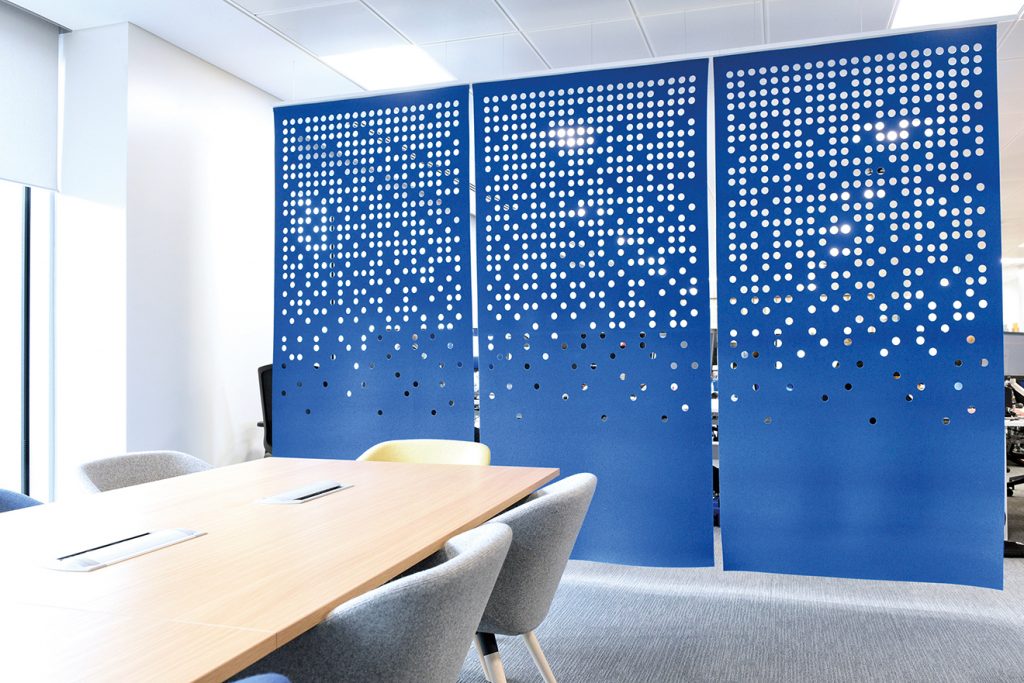
Not only did Erskine House demonstrate how BIM and management software tools can positively affect the construction process, it also influences reporting and future building maintenance. “Traditionally the Project Manager would collate disparate pieces of information and fashion them into a monthly report. Across the programme, a Common Data Enviroment is used to store files, allow live revisions and is accessible to the project team – this included Cost Management, Risk Management and Change Control tools. A digitized reporting approach meant that at any point in time a live and accurate dashboard report could be generated at the touch of a button in an easy to read format.
“Our Project, Cost and BIM Managers participated in a regular knowledge sharing ‘lessons learned’ process across the programme. We share best practice, providing suggestions on templates and tools that can drive consistency of approach on the remaining projects. “We do live cost tracking, live risk management, we used a web based data environment so everybody involved in the project and overall programme has the same folder structure and the same information instantly to hand.
“Early in the process, we identified the need to further develop management tools based on lessons learned at Croydon (the first new HMRC hub) and Bristol.”
This storage of accessible data and asset information is the gift that keeps on giving – even long after completion.
“HMRC are really challenging how they manage their estate to drive efficiency and demonstrate value for money. A key element of this is the building asset information contained in the BIM models. The level of information being recorded and the use of a central information storage strategy means HMRC and their Facilities Management providers will have access to all of that at their fingertips. They will know asset numbers, locations, ages, maintenance history and be able to plan improved maintenance regimes, and when it needs maintained.”
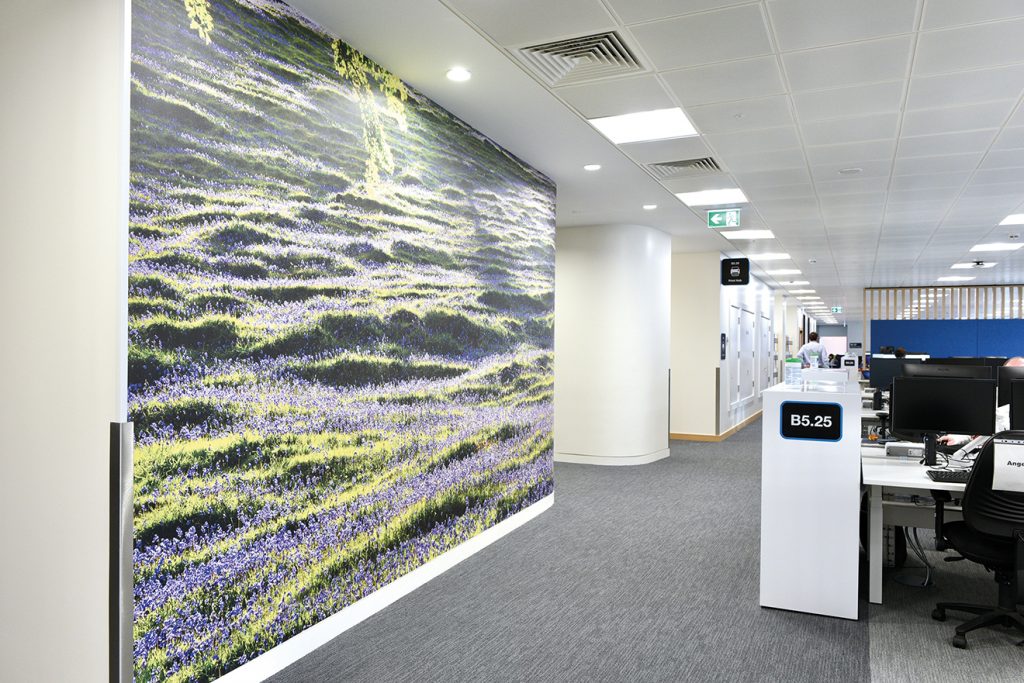
You’d be forgiven for thinking that HMRC’s Erskine House project is the cutting edge of a digital construction revolution, all data driven, cold and calculated. Nothing could be further from the truth.
HMRC staff, the 60,000 people (and in Northern Ireland’s case 1600) moving from regional offices to central hubs, were very much at the forefront of thinking.
Director of the Estates Locations Programme, Colin Casse explains “In 2015, we announced that HMRC aimed to bring its employees together in 13 large, modern offices, making it easier to collaborate and work flexibly. The aim is to relocate civil servants from existing, often fragmented office locations, to modern, cross- departmental workplaces which will be great places to work, making the most of emerging working practices and technology.”
HMRC’s Stakeholder Engagement team ensured they took on board information about staff and their regions to make sure they could help shape the overall design. “We turned images from a staff photographic competition into digital graphics, and there are large visuals of the mountains of Mourne, Carrickfergus Castle, Belfast City and Fermanagh – images representative of where staff came from to provide a connection,” said Graham Fit Out’s Project Manager Gavin Cullen.
Importantly, HMRC also set up a Design and User Experience team to ensure it listened to staff, improving design based on staff feedback from HMRC’s earlier regional centres.
The innovative approach and high specification fit out presented its own set of challenges. The base structure in Belfast was designed before HMRC’s Inclusive Design Guide (IDG) was finalized. This guide captures HMRC’s requirements to support their ambition to make this the most accessible workplace and property estate in government.
Gavin continues: “The IDG goes over and above what Building Control requires and affects many elements, from increasing door widths to make them more inclusive and accessible, Gender Neutral toilet facilities, or improving wayfinding for visually impaired staff. Considering the needs of a diverse range of staff with both visible and unseen disabilities underpins the Guide and its ambitions. It really is very forward thinking and is setting a marker across both private and public workspaces.” Staff development and putting people first also meant a strong emphasis on collaborative areas, break-out zones, meeting and lecture rooms, plus a sophisticated audio-visual provision – all to BIM Level 2 Mandate, Considerate Constructors Scheme Excellent, and BREEAM Excellent standard.
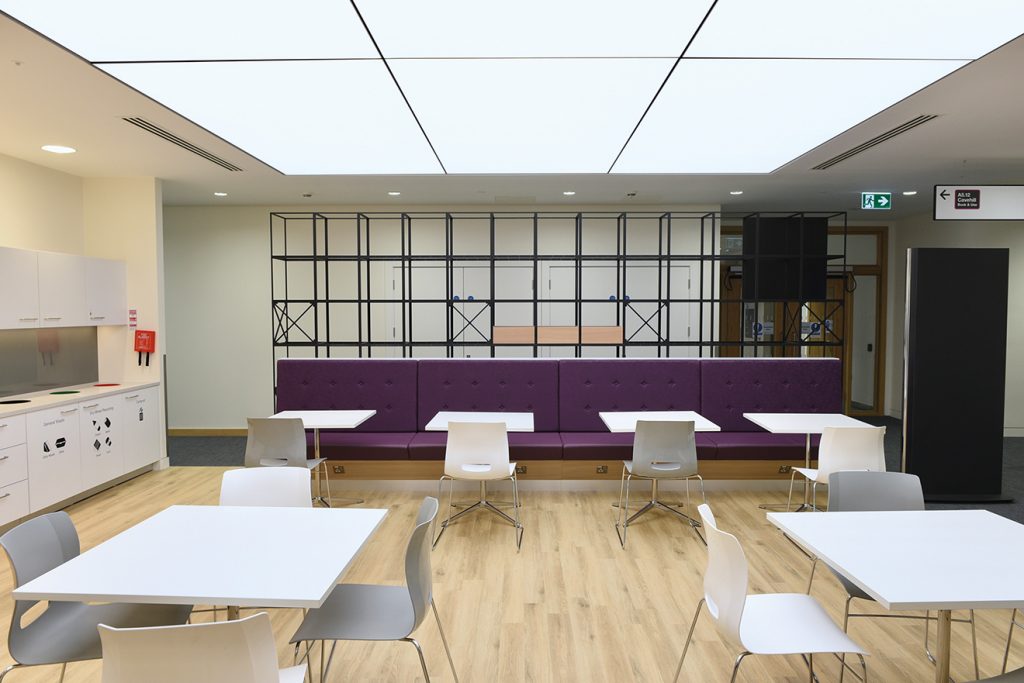
Erskine House may well become an example of best practice in how to construct a cutting-edge, high-quality and ‘smart’ building. The Belfast Regional Centre is certainly going to influence and support the successful delivery of the remaining HMRC regional centres.
One of the key successes has been collaboration. “HMRC has lots of different stakeholder groups, some with experience of construction and others without.” said Kevin. “We collectively acknowledged this and recognised the value that these parties could bring to the project and created and a collaborative working envrionment based on shared goals. This meant bringing the expertise of HMRC’s Consultant Team and Graham Fit Out with their supply chain to design and deliver an affordable project that met the challenging expectations of HMRC.”
Timing was part of the challenge, with HMRC committing to a soft landing for their staff starting in December 2019, and the arrival of 200 employees per day from January 8, 2020. “Having lost that time earlier in the project, we had occupation the day after practical completion”, added Kevin. “The fact that this was possible, with no issues, is down to our working relationship with Graham Fit-Out and the very early engagement of the HMRC team in readying for a seamless occupation.”
“It was a high-end specification in a short delivery time, but collaboration with the wider design team and local supply chain allowed us to identify and agree solutions to any problems that did arise. It was this proactive approach that enabled us to deliver on time,” said Gavin Cullen.
For Turner & Townsend this has been a pioneering project that continues to receive praise. “The planning, construction and fit out of Belfast Regional Centre has been tremendous, and HMRC staff are currently enjoying the new building and all of its exceptional facilities.” HMRC now has 1600 employees growing accustomed to their new surroundings, and bringing benefit to Belfast. While HMRC continues to support its people with accessible parking needs, no parking at Erskine House encourages sustainable transport use, and a modest grab ‘n’ go food provision in the building encourages spend in city centre eateries – all in keeping with a government not only transforming how it works, but how it interacts with its surroundings.



